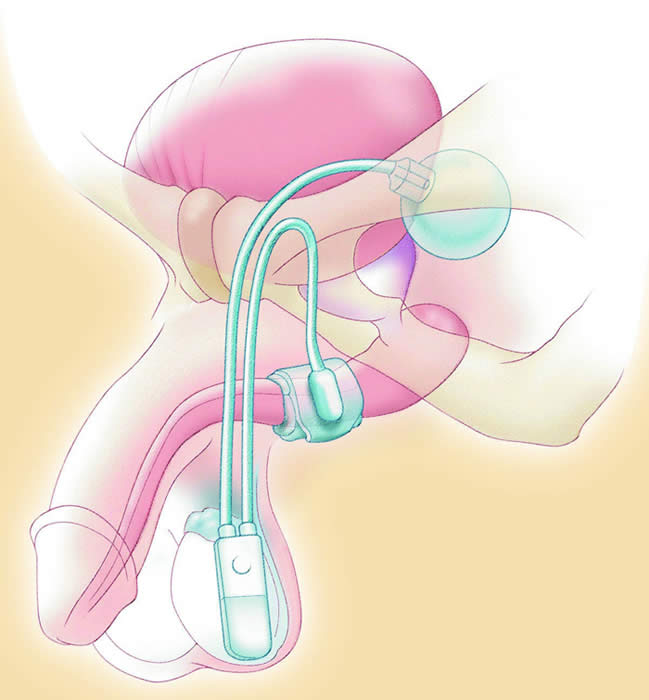Scientific Editor: Editorial Board ISUD website
- What is an Artificial Urinary Sphincter (AUS)?
- When is it placed?
- What sort of preparation is required?
- How is it placed?
- What about after placing it?
- What is the effect on patient’s quality of life?
What is an Artificial Urinary Sphincter (AUS)?
Artificial urinary sphincter (AUS) is a prosthetic material that is placed in men around the urethra to treat stress/effort urinary incontinence (i.e. urine loss while coughing, exercising, lifting weight).
When is it placed?
The artificial urinary sphincter is indicated in men with stress/effort incontinence, which usually occurs after radical prostatectomy for the treatment of prostate cancer. It seems that 5-10% of men who have undergone any type of radical prostatectomy, will present some significantly disturbing urinary incontinence one year after surgery.
What sort of preparation is required?
Upon hospital admission, preoperative preparation includes blood tests, chest X-ray and ECG (electrocardiogram). In case you are on anticoagulant therapy, it may be required to interrupt your anticoagulant therapy a few days before the operation. You should always consult your Cardiologist, for there may be need to replace anticoagulants with injections in the abdominal region.
How is it placed?
The procedure requires general or spinal anesthesia. In the beginning, the patient is placed in the gynecological examination position, the region is cleansed and a catheter is placed in the bladder. The artificial sphincter is inserted and implanted through a small incision that is made at the point where the penis meets the scrotum. The pump mechanism is composed of three parts. The device is not visible from the outside. The control pump, which is implanted in the scrotum, can be palpated by the patient who is trained how to operate the artificial sphincter. A urinary catheter is placed during the procedure, Hospital stay is usually 3-4 days.
Complication rate is 4,5 – 15 %, while 1 out of 4 patients will need at some point later on to have the sphincter replaced due to some failure.
What about after placing it?
During the first postoperative days, you may feel some pain in the operated region, which will be treated with analgesics.
Upon discharge from hospital, you will receive specific written instructions about:
- what antibiotic regimen to take
- when to remove the urinary catheter
- how the artificial sphincter works
You should necessarily consult your Cardiologist about when to restart your previous anticoagulant treatment.
What is the effect on patient’s quality of life?
Most men do not face any problem after having an artificial urinary sphincter placed.


